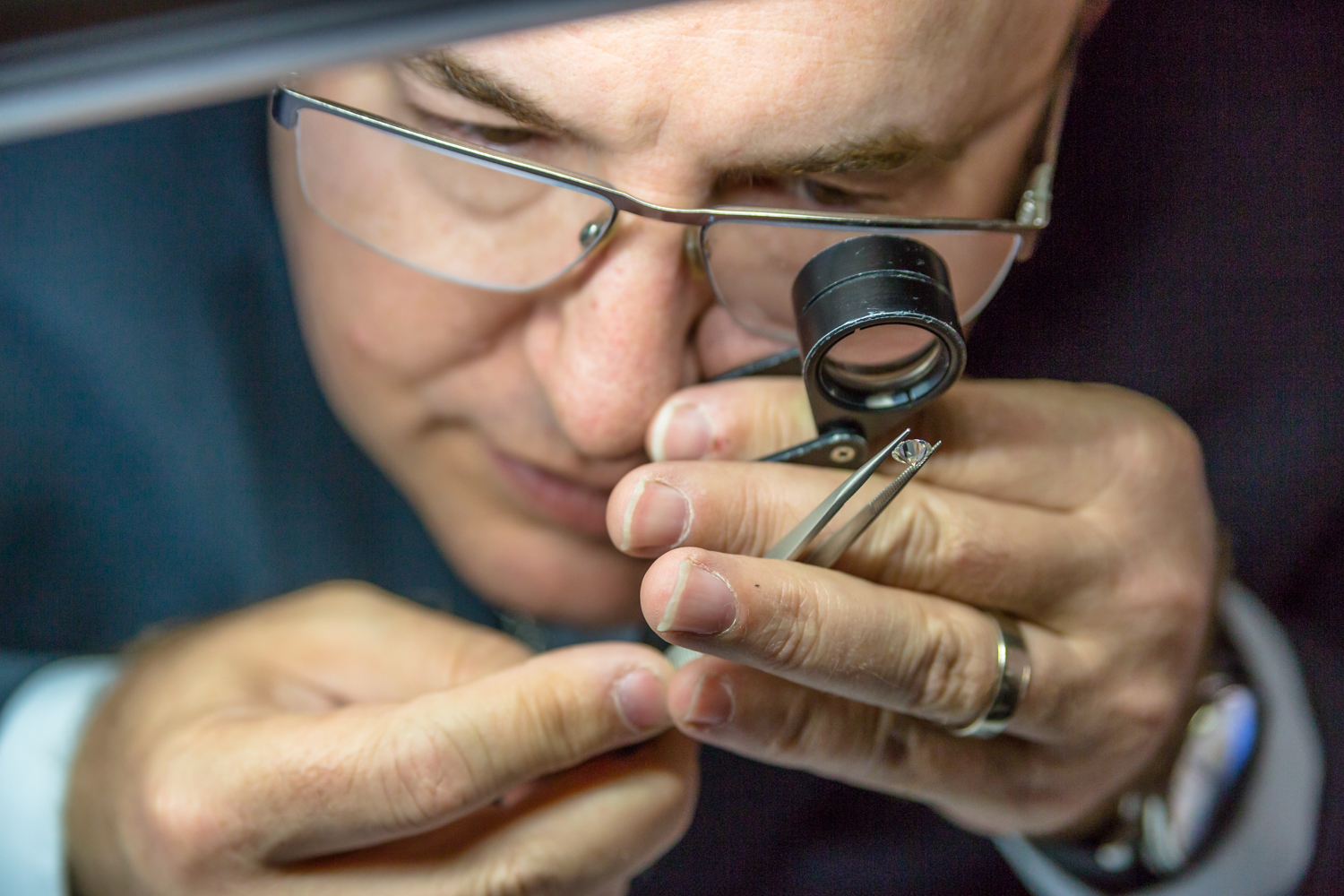Understanding a Diamond Grading Report
Sometimes called a diamond certificate, a diamond grading report is one of the most valuable tools you have when selling your diamond to a qualified San Diego diamond buyer. This grading report is conducted by a gemological laboratory, and is an independent evaluation of the diamond you want to sell. Today, the report is often included with the purchase of a diamond or diamond jewelry
A grading report is not an “endorsement” of your diamond but a detailed description of the diamond’s characteristics. This makes it easier for the diamond buyer to assign a proper value to the diamond or diamond engagement ring that you wish to sell. There are many different diamond and gemstone labs producing diamond grading reports, but all basically contain the same information.
The report that you present to a San Diego diamond buyer, along with your diamond, should contain the following elements:
Name: The name of the gemological lab that produced the report is perhaps the most important detail on the certificate. The most trusted lab for large, high quality, diamonds is GIA. Other labs which diamond buyers will usually trust are IGI, AGS, AGSL, EGL, and HRD.
Number: This is the diamond grading report (certificate) number which uniquely identifies your diamond. The lab keeps a copy of this and all the details of your diamond.
Shape & Cutting Style: Shape refers to your diamond’s outline when viewed face up. This could be round, marquise, heart, or some other shape. The cutting style refers to your diamond’s facets and how they have been arranged. This could be brilliant, princess, emerald, or some other cutting style. The cushion cut diamond is often found in antique diamond jewelry.
Measurements: If you have a round diamond the measurement numbers will reflect: minimum diameter – maximum diameter x depth. If you have a fancy shaped diamond the measurement will be: length x width x depth. Measurements are taken to the 100th of a millimeter.
Weight: The weight of your diamond is measured in carats. On the grading report this weight is measured to the 100th of a carat. The price that you receive when selling a diamond will be significantly more if the diamond is at least 1 carat.
Color: The color of your diamond is graded from D (the best) down to Z. Beyond the Z grading are fancy color grades. San Diego diamond buyers are especially looking for diamonds with a grade of F or better.
Clarity: The clarity of your diamond is graded on a scale from F (the best and extremely rare) down through IF, VVS1, VVS2, VS1, VS2, SI1, SI2, I1, I2, and I3. You are more likely to sell your diamond for a good price if it is VSI or better, especially if the color is a high grade, too.
Cut Grade: Many laboratories are now including “cut grades” in their diamond grading reports. This grade is generally based on overall proportion, symmetry, and polish, which together contribute to the fire and brilliance of your diamond. The cut grade that a diamond buyer will be looking for is Ideal or Excellent.
Finish (Polish & Symmetry): Your diamond’s polish refers to the quality of the polish on the facets, while the symmetry refers to how evenly the facets are arranged. Diamond buyers are looking for a polish and symmetry grade of very good or better.
Fluorescence: This is an optical effect that occurs when your diamond is exposed to ultra-violet light, making the diamond appear slightly blue. While some people in San Diego like this blue effect and purchase diamonds specifically because they have a strong fluorescence, high quality diamonds in general have little to no fluorescence.
Plot: Your fingerprint is unique. And so is a diamond. Your diamond’s uniqueness is graphically represented in the diamond grading report with the plot. The internal and external characteristics are plotted in different colors.
Proportions (Depth & Table): The depth of your diamond is a percent figure, which shows the percent of the depth (table to culet) relative to the width of the stone. The table of your diamond refers to its largest facet, which you see when the diamond is face-up. The table percent signifies the table size as a percentage of the diamond’s average width.
Girdle: This part of your diamond grading report describes the dividing line between the crown (top part of the stone) and the pavilion (bottom part of the stone). A faceted girdle can sometimes improve the value of your diamond.
Culet: Not all diamonds have a culet, which is the facet on the pointy bottom part of a diamond. A large cutlet can detract from a diamond’s brilliance, especially if your diamond is round or brilliant. In general, if there is a culet, you want it to be very small.
For information on how to sell diamonds for cash today, contact San Diego Jewelry Buyers for a free, no hassle, appraisal.
We are San Diego’s trusted A+ BBB rated diamond buyer and estate jewelry buyer.
 our
our 

